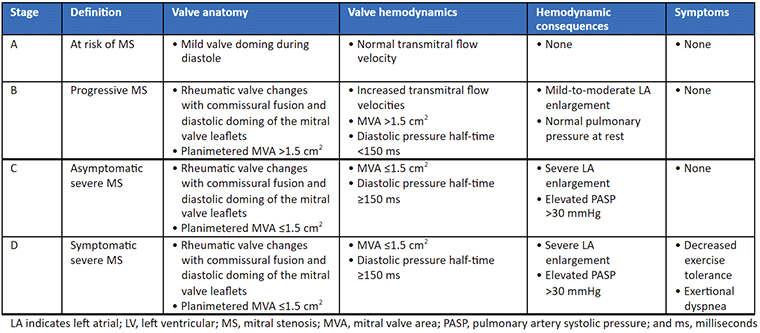Criteria
Stages of mitral valve disease[22]
[Figure caption and citation for the preceding image starts]: Stages of mitral stenosis (rheumatic disease)Adapted from Otto CM et al. J Am Coll Cardiol 2021:77:e25-e197 [Citation ends].
In mitral annular calcification-related disease, the hemodynamic criteria are the same as for rheumatic disease. However, as most of these patients are older people, both left atrium and left ventricle compliance are usually reduced, adding another hemodynamic cause for the patient’s symptoms that will not be relieved even if mitral intervention is successful.[28] Additionally, the echocardiographic appearance of the valve is quite different from rheumatic mitral stenosis. The mitral leaflets are usually normal although in some cases they may be calcified. There is dense calcification of the mitral annulus, encompassing part or all of the annulus. Transesophageal echocardiography may be especially helpful in assessing the extent and density of the annular calcification.
Echocardiographic variables relating to valvotomy outcome (rheumatic disease only)[29][30][31]
Each of the following are graded on a severity score of 1 to 4:
Valve mobility
Calcification
Leaflet thickening
Subvalvular apparatus distortion
The maximum pathologic score is 16 and the minimum is 4.
Valve scores of <9 suggest a good outcome with balloon valvotomy.
Use of this content is subject to our disclaimer